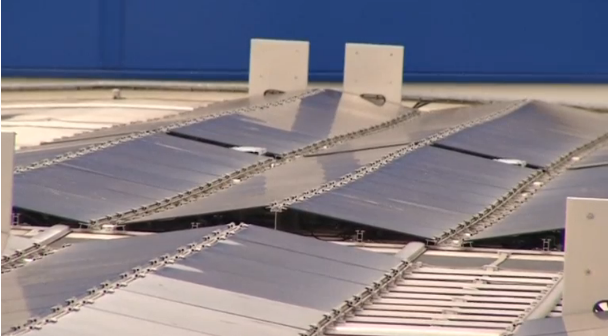
LAUSANNE, SWITZERLAND (Reuters) — Solar panels designed by a start-up offshoot of Switzerland’s EPFL institute have achieved the highest efficiency ever recorded, in independent tests.
In tests conducted by the Fraunhofer Institute in Germany, Insolight’s panels scored a yield of 36.4 percent, almost double what current solutions on the market achieve.
“Our key innovation is that you do not need to rotate the panel in order to follow the sun,” explained Insolight co-founder and chief operating officer Florian Gerlich. “We can follow the sun in a flat manner, like any other solar panel, which means that our panel can be installed on standard rooftops, with standard mounting technology, just like any other solar panel there is.”
A flat, thin, transparent, optical system made from plastic directs the sun’s rays to a small surface area of super high performance cells with a yield of 42 percent.
These super cells are designed to capture differing wave lengths. At the heart of the invention is the use of round lenses to focus light waves on super cell segments measuring a matter of several square millimetres in size.
This patented microtracking system captures 100 percent of the sun’s rays regardless of the angle of incidence. The injection-moulded transparent plate is moved one centimetre over the whole day by a metallic frame. Such a small movement takes place in real time, with a sensor detecting the sun’s position, ensuring maximum yield.
“We developed the technology of microtracking,” said researcher Noe Bory. “Why micro? Why tracking? Micro is a really really small movement that is encapsulated into the solar panel and tracking is to track the sun to concentrate the light into our really tiny solar cell.”
As Gerlich explained, “the lenses are basically small magnifying glass. The small squares spread out over the whole surface and under each of these lenses there is a small solar cell. It’s a bit like the lenses that you’re using in your reading glasses. It’s the same technology, it’s just a particular shape in order to be able to follow the sun from morning to the evening.”
Similar systems are being developed elsewhere, but Insolight says its version could be market-ready next year.
“With our technology we can reach an efficiency of up to 36 percent,” said Gerlich. “Traditionally the market sits at around 18 percent and we can double this. Therefore we can double the return on investment for the final client.”
Although the system might be more expensive to buy, Insolight says solar panels will slash the price per kWh paid by consumers from 14 US cents to 9 cents.
“What we developed here at Insolight is a disruptive technology in solar power,” said Bory. “Doubling the efficiency means that the revenue that you can have out of your rooftop will double as well, so we hope and we believe that with this efficiency we will see a lot more rooftops with solar panels on it.”
A number of commercial companies have expressed interest in developing the technology.
In April a 10 square metre bed of panels will be installed on the EPFL campus in Lausanne and another at least five times that size later this summer.








